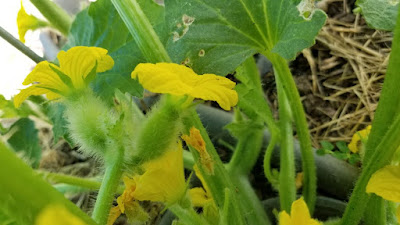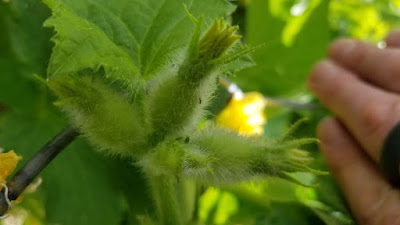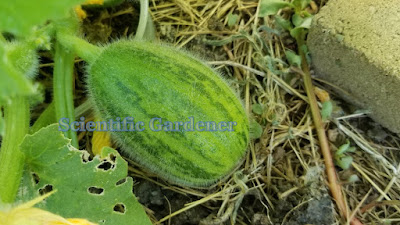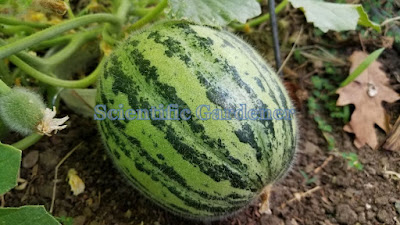Despite how incredibly popular one of my carosello cucumber varieties has been, for years I have struggled with some of its greatest drawbacks. The variety in question is the Tondo Manduria (or Mandurian Round) and the primary concern with the variety has been its inconsistency of color and texture. This incredible cucumber exhibits polymorphic fruit (fruit with various expressions) that are either light, large and firm or light with splotches medium and tender. Additionally, the growth pattern of this variety often varies from compact to sprawling.
While I am accepting of some differences in growth pattern and size, one of the most difficult issues for me is consistency in texture and color. If I, as a gardener, grew out a variety last year that exhibited a very smooth pleasant texture and when I grew it out again this year found that it had a more crunchy less pleasant texture, then I would have concerns about growing it again. In food, consistency in shape provides the first sale, but enjoyable texture and taste is what keeps them coming.
In 2021, I met up with a farmer named Fabio. Fabio is a native Italian whose family has been farming for generations. Over the course of the year, I found out that he had some Tondo Manduria that appeared very consistent. Based on his pictures and description, it seemed like I had finally found what I was looking for. I was finally going to realize plants that produce round tender light yet splotchy fruit on compact vines. In late 2021 I received the seed and in early May I had planted a large patch of transplants out in the best spot in the most fertile plot.
At first everything went well. The plants grew splendid. The seed germinated strong and once the transplants were in the ground, they took off. I was excited to see the growth. But the vines continued to grow. They grew and grew without producing fruit. So I trained the vines up large tomato cages and let the vines sprawl down the sides.
Then the fruit began forming. This was exciting. Soon after setting, I could see slight splotching on the female flowers. But as the fruit began to form, I noticed that a lot of them were darker than I was used to. They had splotching, but the base color was darker than usual. Then I noticed the texture. Instead of being shiny and tender, most of the fruit looked dull and hard. Pressing on the fruit confirmed my concerns.
By this point, I was telling myself that everything would be okay. This variety would turn out to be great. So, I found a few cylindrical and oval fruit to rouge from the population. I brought them home and did the taste test. They tasted like a dull, unexciting and not very desirable cucumber. While they were not necessarily terrible or something that I would highly avoid if I were really hungry, they were not anything that I would go seeking after either.
So – what should I do now? What can I do once I have a bunch of fruit that I know will produce seed that may be useful later, but that I am not that interested in this year? I pull the males! I rouge out any diseased plants and any of the really small fruit and pull all the male flowers off. The more I pull off the males, the sooner I can begin saving seed from my second carosello crop, which I happened to plant when the fruit of this heirloom Manduria first set.
Then I can get the plants out as soon as possible. As soon as the fruit was at a decent stage for seed saving, I pulled the plants out. I would pull out some plants a little immature, but would save those with the best fruit to mature a little longer.
As a seed-saving gardener, I win some and I lose some. It is definitely frustrating when I invest one of the largest portions of my garden on a variety that has undesirable traits. We learn as we go and the more problems that we experience, the more motivation that compounds within us to figure out what didn’t work and get it right.








































































No comments:
Post a Comment
Dear Gardening Friends,
I look forward to learning more about gardening with you. Your comments help me recognize that gardening is a life-long journey.
To advertisers: Note that this blog is concerned with gardening and gardening techniques. Please do not attempt to advertise here by leaving a comment. Depending upon how egregious the comment is, it may be deleted.